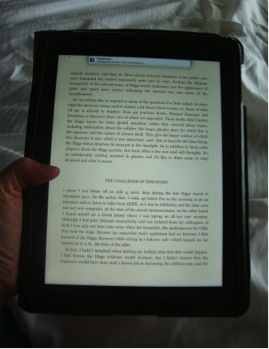Town of Shadows
Town of Shadows
Lindsay Stern
Scrambler Books, 2012
96 pages
$12
What: a debut prose-poem novella
Who: the eponymous town of shadows
And: its cast of shadowy characters, including a rug doctor, a lepidopterist, bureaucrats, a bodiless mayor speaking from a gramophone that sputters ash, a child with an hour glass and a white balloon who might be god, etc.
Where: mirrors, shadows, bell jars, and graves
When: see “where”
How: absurdly, surreally, in the not-psychologically-penetrating mode of the fairy tale
Also, of course: non-linearly
Why: why not?
Why, put less glibly: trying the forms less travelled is always a worthwhile endeavor
Why, put another way: when writing about time, eschewing traditional narrative structure is probably a good move
Cleverness, dispersed throughout: a lexicon of pithy definitions, e.g. “Self, n. A hidden crowd” and “Photograph, n. A stunned pulse”
And: word equations on a black board at the town’s school, e.g. “thinking – thought = I”
Beauty, dispersed throughout: carefully chiseled sentences, like “The seasons had spun from autumn to spring so quickly that the blood in his thermometer splashed up and down, leaving a ruby film on the glass.”
Intellectual reactions: a fleeting, perhaps insecure desire to return to writing reviews in sentences and paragraphs
Visceral reactions: not many, except when a character shaves off his eyelashes
Aesthetic reactions: “hot damn, another beautiful sentence!”
Small risk taken and more or less averted: preciousness
Big risk taken, perhaps necessarily: the lack of a clear narrative arc
Setback of that big risk: the reading process slows mid-way, when you’re wondering how all the beautiful sentences and clever observations will add up
The payoff: a refreshing reading experience full of arresting imagery and fascinating if not provocative ideas that linger well after finishing the book
Further reading, if you want more city: Magadlena Tulli’s Dreams and Stones
Further reading, if you want more wonder: Italo Calvino’s Invisible Cities
Further reading, if you want more pathos: Anne Carson’s The Autobiography of Red

